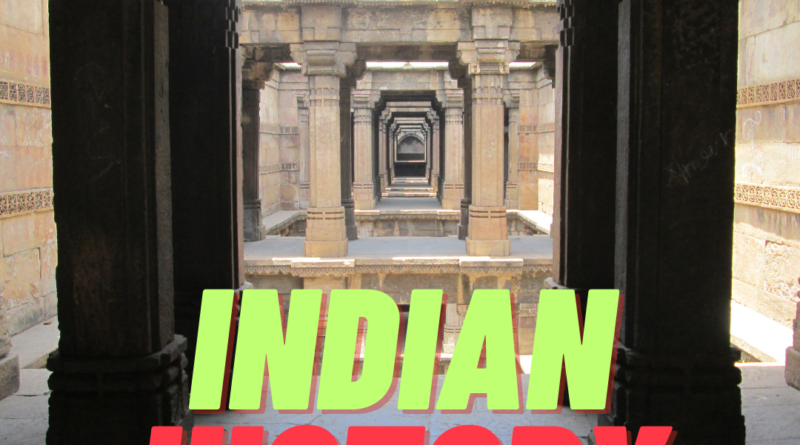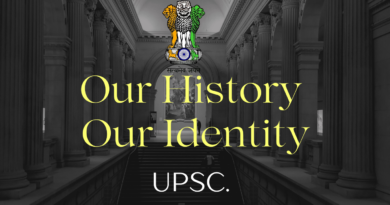Indian History at a Glance
India’s past spans over several millennia, with a rich and diverse cultural heritage that continues to influence the country today. Understanding this past is crucial for aspirants of the Union Public Service Commission (UPSC) exam, as it provides a foundation for understanding India’s complex history, society, and politics. In this article, we will provide a brief overview of India’s ancient past, covering key historical periods, events, and figures.
Prehistoric India:
The earliest human presence in India dates back to around 75,000 years ago. These early humans were hunter-gatherers who lived in small communities and relied on natural resources for survival. Over time, these communities developed agricultural practices and began to settle in permanent villages. By around 2600 BCE, the Indus Valley Civilization had emerged, with sophisticated urban centers and a writing system.
Vedic Age:
The Vedic Age (1500-500 BCE) was a significant period in India’s ancient past, as it saw the emergence of the Vedas, a collection of sacred texts that continue to influence Hinduism today. During this period, Aryans migrated into India and established their own social and religious system. The caste system, which divided society into different social groups based on occupation and birth, also emerged during this period.
Mauryan Empire:
The Mauryan Empire (322-185 BCE) was the first centralized empire in India, established by Chandragupta Maurya. Under the rule of the famous emperor Ashoka, the Mauryan Empire expanded to include most of present-day India and parts of Afghanistan. Ashoka is known for his policies of non-violence and religious tolerance, as well as his edicts, which were inscribed on pillars and rocks throughout the empire.
Gupta Empire:
The Gupta Empire (320-550 CE) is considered a golden age in India’s ancient history, as it was a time of great prosperity and cultural achievement. During this period, the arts, sciences, and literature flourished, and Indian mathematics and astronomy made significant advancements. The Gupta Empire also saw the development of the decimal system, the concept of zero, and the use of Arabic numerals.
Harsha Empire:
The Harsha Empire (606-647 CE) was a short-lived but significant period in Indian history, as it saw the emergence of a strong centralized state in north India. Harsha was known for his patronage of the arts, literature, and Buddhism, and his empire saw the development of a unique style of architecture and sculpture.
Islamic Invasions:
From the 8th century onwards, India was repeatedly invaded by Islamic dynasties, including the Ghaznavids, the Ghurids, and the Mughals. These invasions brought significant changes to Indian society, culture, and religion. Many Hindus were forced to convert to Islam, and Islamic culture began to merge with Indian culture, leading to the emergence of new cultural forms such as Indo-Islamic architecture.
Mughal Empire:
The Mughal Empire (1526-1857) was one of the most powerful empires in India’s ancient history, established by the Turkic-Mongol emperor Babur. Under the rule of famous emperors such as Akbar, Jahangir, and Shah Jahan, the Mughal Empire reached its peak of power and cultural achievement. The empire saw the development of a unique Mughal style of art and architecture, including the Taj Mahal, and the growth of a cosmopolitan culture that blended Indian and Islamic traditions.
British Raj:
The British Raj (1858-1947) was a period of British colonial rule in India, which began after the Indian Rebellion of 1857. The British Raj saw the exploitation of India’s resources and the suppression of Indian culture and traditions. The British implemented policies such as the divide and rule policy, which exacerbated existing tensions between different communities in India. However, the British also brought significant changes to Indian society, including the introduction of modern education, railways, and a modern legal system.
Indian Independence Movement:
The Indian independence movement was a long and difficult struggle against British colonial rule, and it saw the emergence of many important leaders such as Mahatma Gandhi, Jawaharlal Nehru, and Sardar Vallabhbhai Patel and many more. The movement was marked by non-violent protests, civil disobedience, and mass mobilization, and it eventually led to India’s independence in 1947.
Post-Independence India:
India’s post-independence period has been marked by significant social, economic, and political changes. India adopted a democratic system of governance, and it has made significant strides in areas such as education, healthcare, and industry. However, the country also faces significant challenges such as poverty, corruption, and communal tensions.
Conclusion:
India’s past is rich and diverse, and it continues to influence the country today. Aspirants of the UPSC exam must have a solid understanding of India’s history, culture, and society to succeed in the exam and to contribute to the country’s development.
भारतीय इतिहास एक नजर में
भारत का अतीत कई सदियों से समृद्ध और विविध सांस्कृतिक विरासत के साथ फैला हुआ है, जो आज भी देश को प्रभावित करता है। संघ लोक सेवा आयोग (यूपीएससी) परीक्षा के उम्मीदवारों के लिए इस अतीत को समझना महत्वपूर्ण है, क्योंकि यह भारत के जटिल इतिहास, समाज और राजनीति को समझने के लिए एक आधार प्रदान करता है। इस लेख में, हम प्रमुख ऐतिहासिक अवधियों, घटनाओं और आंकड़ों को शामिल करते हुए भारत के प्राचीन अतीत का संक्षिप्त विवरण प्रदान करेंगे।
प्रागैतिहासिक भारत:
भारत में सबसे पहले मानव की उपस्थिति लगभग 75,000 साल पहले की है। ये प्रारंभिक मानव शिकारी-संग्राहक थे जो छोटे समुदायों में रहते थे और जीवित रहने के लिए प्राकृतिक संसाधनों पर निर्भर थे। समय के साथ, इन समुदायों ने कृषि पद्धतियों को विकसित किया और स्थायी गांवों में बसने लगे। लगभग 2600 ईसा पूर्व तक, परिष्कृत शहरी केंद्रों और एक लेखन प्रणाली के साथ, सिंधु घाटी सभ्यता का उदय हुआ था।
वैदिक युग:
वैदिक युग (1500-500 ईसा पूर्व) भारत के प्राचीन अतीत में एक महत्वपूर्ण अवधि थी, क्योंकि इसमें वेदों का उदय हुआ, पवित्र ग्रंथों का एक संग्रह जो आज भी हिंदू धर्म को प्रभावित करता है। इस अवधि के दौरान, आर्यों ने भारत में प्रवास किया और अपनी स्वयं की सामाजिक और धार्मिक व्यवस्था स्थापित की। जाति व्यवस्था, जिसने समाज को व्यवसाय और जन्म के आधार पर विभिन्न सामाजिक समूहों में विभाजित किया, का भी इस अवधि के दौरान उदय हुआ।
मौर्य साम्राज्य:
मौर्य साम्राज्य (322-185 ईसा पूर्व) चंद्रगुप्त मौर्य द्वारा स्थापित भारत का पहला केंद्रीकृत साम्राज्य था। प्रसिद्ध सम्राट अशोक के शासन में, मौर्य साम्राज्य का विस्तार वर्तमान भारत और अफगानिस्तान के कुछ हिस्सों को शामिल करने के लिए हुआ। अशोक अपनी अहिंसा और धार्मिक सहिष्णुता की नीतियों के साथ-साथ अपने आदेशों के लिए जाना जाता है, जो पूरे साम्राज्य में स्तंभों और चट्टानों पर खुदे हुए थे।
गुप्त साम्राज्य:
गुप्त साम्राज्य (320-550 सीई) को भारत के प्राचीन इतिहास में एक स्वर्ण युग माना जाता है, क्योंकि यह महान समृद्धि और सांस्कृतिक उपलब्धि का समय था। इस अवधि के दौरान, कला, विज्ञान और साहित्य का विकास हुआ और भारतीय गणित और खगोल विज्ञान ने महत्वपूर्ण प्रगति की। गुप्त साम्राज्य ने दशमलव प्रणाली के विकास, शून्य की अवधारणा और अरबी अंकों के उपयोग को भी देखा।
हर्ष साम्राज्य:
हर्ष साम्राज्य (606-647 CE) भारतीय इतिहास में एक अल्पकालिक लेकिन महत्वपूर्ण अवधि थी, क्योंकि इसने उत्तर भारत में एक मजबूत केंद्रीकृत राज्य का उदय देखा। हर्ष को कला, साहित्य और बौद्ध धर्म के संरक्षण के लिए जाना जाता था, और उसके साम्राज्य ने वास्तुकला और मूर्तिकला की एक अनूठी शैली का विकास देखा।
इस्लामी आक्रमण:
8वीं शताब्दी के बाद से, भारत पर इस्लामी राजवंशों द्वारा बार-बार आक्रमण किया गया, जिसमें गजनवी, घुरिड और मुगल शामिल थे। इन आक्रमणों ने भारतीय समाज, संस्कृति और धर्म में महत्वपूर्ण परिवर्तन लाए। कई हिंदुओं को इस्लाम में परिवर्तित होने के लिए मजबूर किया गया, और इस्लामी संस्कृति भारतीय संस्कृति के साथ विलीन होने लगी, जिससे इंडो-इस्लामिक वास्तुकला जैसे नए सांस्कृतिक रूपों का उदय हुआ।
मुगल साम्राज्य:
मुगल साम्राज्य (1526-1857) भारत के प्राचीन इतिहास में सबसे शक्तिशाली साम्राज्यों में से एक था, जिसकी स्थापना तुर्क-मंगोल सम्राट बाबर ने की थी। अकबर, जहाँगीर, और शाहजहाँ जैसे प्रसिद्ध सम्राटों के शासन में, मुग़ल साम्राज्य शक्ति और सांस्कृतिक उपलब्धि के अपने चरम पर पहुँच गया। साम्राज्य ने कला और वास्तुकला की एक अनूठी मुगल शैली का विकास देखा, जिसमें ताजमहल भी शामिल था, और भारतीय और इस्लामी परंपराओं को मिश्रित करने वाली एक महानगरीय संस्कृति का विकास हुआ।
ब्रिटिश राज:
ब्रिटिश राज (1858-1947) भारत में ब्रिटिश औपनिवेशिक शासन का काल था, जो 1857 के भारतीय विद्रोह के बाद शुरू हुआ। ब्रिटिश राज ने भारत के संसाधनों के शोषण और भारतीय संस्कृति और परंपराओं के दमन को देखा। अंग्रेजों ने फूट डालो और राज करो की नीति जैसी नीतियों को लागू किया, जिसने भारत में विभिन्न समुदायों के बीच मौजूदा तनाव को बढ़ा दिया। हालांकि, अंग्रेजों ने आधुनिक शिक्षा, रेलवे और एक आधुनिक कानूनी प्रणाली की शुरुआत सहित भारतीय समाज में भी महत्वपूर्ण बदलाव लाए।
भारतीय स्वतंत्रता आंदोलन:
भारतीय स्वतंत्रता आंदोलन ब्रिटिश औपनिवेशिक शासन के खिलाफ एक लंबा और कठिन संघर्ष था, और इसमें महात्मा गांधी, जवाहरलाल नेहरू और सरदार वल्लभभाई पटेल आदि जैसे कई महत्वपूर्ण नेताओं का उदय हुआ। आंदोलन को अहिंसक विरोध, सविनय अवज्ञा और जन लामबंदी द्वारा चिह्नित किया गया था, और इसने अंततः 1947 में भारत की स्वतंत्रता का नेतृत्व किया।
स्वतंत्रता के बाद का भारत:
भारत की स्वतंत्रता के बाद की अवधि को महत्वपूर्ण सामाजिक, आर्थिक और राजनीतिक परिवर्तनों द्वारा चिह्नित किया गया है। भारत ने शासन की एक लोकतांत्रिक प्रणाली को अपनाया, और इसने शिक्षा, स्वास्थ्य सेवा और उद्योग जैसे क्षेत्रों में महत्वपूर्ण प्रगति की है। हालाँकि, देश को गरीबी, भ्रष्टाचार और सांप्रदायिक तनाव जैसी महत्वपूर्ण चुनौतियों का भी सामना करना पड़ता है।
निष्कर्ष:
भारत का अतीत समृद्ध और विविध है, और यह आज भी देश को प्रभावित करता है। यूपीएससी परीक्षा के उम्मीदवारों को परीक्षा में सफल होने और देश के विकास में योगदान देने के लिए भारत के इतिहास, संस्कृति और समाज की ठोस समझ होनी चाहिए।


